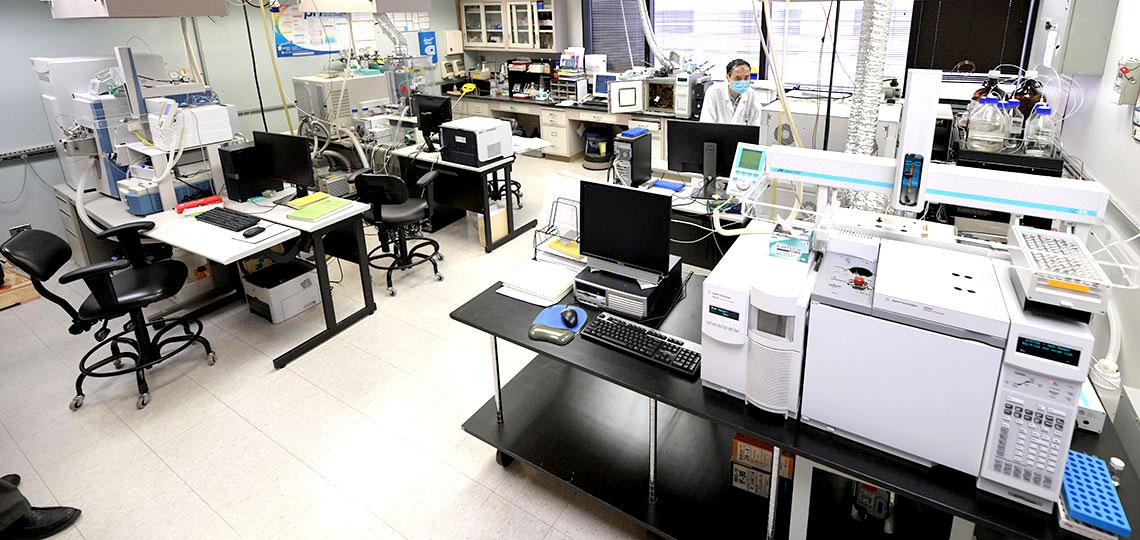
About the Lab
The Stable Isotope Core Laboratory housed at the CNRC is comprised of the The Isotope Ratio Mass Spectrometry Laboratory and the Gas/Liquid Chromatography Mass Spectrometry Laboratory. This sophisticated technology and the center's knowledgeable scientists have established the CNRC as an international leader in the use of stable isotopic tracers of nutrients to assess nutrient needs.
Stable Isotopes
Stable isotopes are safe, non-radioactive forms of common elements such as carbon, nitrogen and hydrogen that occur naturally in small amounts in the foods and water we consume every day. Because they are unique and relatively rare, stable isotopes are an invaluable tool for studying the flow of nutrients through the human body.
Compounds containing stable isotopes can be identified and measured using a distinct feature: the molecular weight of a stable isotope-containing compound differs from that of the original compound. Using special instrumentation called mass spectrometers, scientists use this weight difference to trace the stable isotopes as they travel through the body and appear in the breath, urine, blood and stool. Because these isotopes are non-radioactive, they are harmless and can be used in studies with infants and children as well as pregnant and nursing women.
Benefits to Investigators and Collaborations
The stable Isotope core lab provides support for researchers interested in using stable isotopes to investigate metabolic pathways such as gluconeogenesis, lipolysis, proteolysis, etc. with prior consultation and arrangement with the lab's director Dr. Shaji Chacko.
The lab provides analytical equipment and expertise for a number of studies requiring measurement of isotopically enriched compounds from body fluids for investigating glucose, amino acid and fatty acid metabolism. Training in the use of stable isotopes and instrumentation is available to CNRC postdoctoral fellows and visiting scientists, who also have the opportunity to participate in CNRC research programs. Instruments used for the analyses of compounds of metabolic importance in the stable Isotope Core Laboratory include multiple GCMS systems with chemical Ionization (CI) capability, LC-MS/MS systems equipped with electro spray and atmospheric pressure chemical ionization probes, Isotope Ratio Mass Spectrometer systems coupled with multiple peripheral devices such as GC-Combustion, Gas bench (breath CO2) c) Pyrolysis (D2O analyses) etc.
Interested in learning about the use of the stable isotopes?
Anyone who is interested in learning about the use of the stable isotopes of hydrogen and oxygen to measure the effects of diets, growth, diseases, and clinical treatments on total body water, body composition, and energy expenditure may contact Dr. William Wong (Professor Emeritus).








